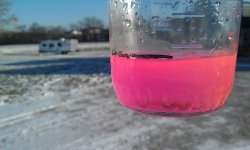David-and-Cheryl
Well-known member
We just got a 2013 Landmark San Antonio...we'll be using it only occasionally for the next year or so.
Here's a newbie question on winterization: if you drain the fresh water system, including the hot water heater, and all the holding tanks, do you still need to put antifreeze into the system in the wintertime? If so, why? There is is little or no water there to freeze and break anything?
For what it's worth, we live in the Dallas area, so we don't get a lot of sub-freezing weather, but temps can sometimes get into the 20s for a while.
I know it's odd to be thinking about winterization when it's 95 degrees outside! Just thinking ahead. We are planning to take a 2-week trip at the end of December, so we probably wouldn't do it until after then unless the early winter is unusually cold.
Thanks!
Here's a newbie question on winterization: if you drain the fresh water system, including the hot water heater, and all the holding tanks, do you still need to put antifreeze into the system in the wintertime? If so, why? There is is little or no water there to freeze and break anything?
For what it's worth, we live in the Dallas area, so we don't get a lot of sub-freezing weather, but temps can sometimes get into the 20s for a while.
I know it's odd to be thinking about winterization when it's 95 degrees outside! Just thinking ahead. We are planning to take a 2-week trip at the end of December, so we probably wouldn't do it until after then unless the early winter is unusually cold.
Thanks!

